I retired in 2012 and decided to turn up the wick on my lifelong interest in film photography. I wanted something to do in the indoor winter months and started to scan my archive of slides. My first efforts were simply to safeguard slides that were starting to deteriorate but then I started to process some prints and negatives as well.
Echoes from 1917
During my scanning efforts I found an envelope of creased contact prints of photos taken by my Grandfather, Rex Cox, in the First World War. Although scanning them served the purpose of preservation it wasn’t possible to extract much detail. The back of some of the prints had notes showing names and descriptions and I mentioned this to my brother. He said he had a folder of the negatives with additional notes.
Scans of the negatives brought up a lot of extra detail and the notes gave the names of villages in Italy and Slovenia. I didn’t know much about the war in Italy and there wasn’t much information available about British involvement. However we did find out that in 1917 Britain sent a small number of heavy Howitzers to support Italy in the fight against the Austrians. Grandfather Rex had been a Sergeant in charge of one of these guns.
Rex’s War
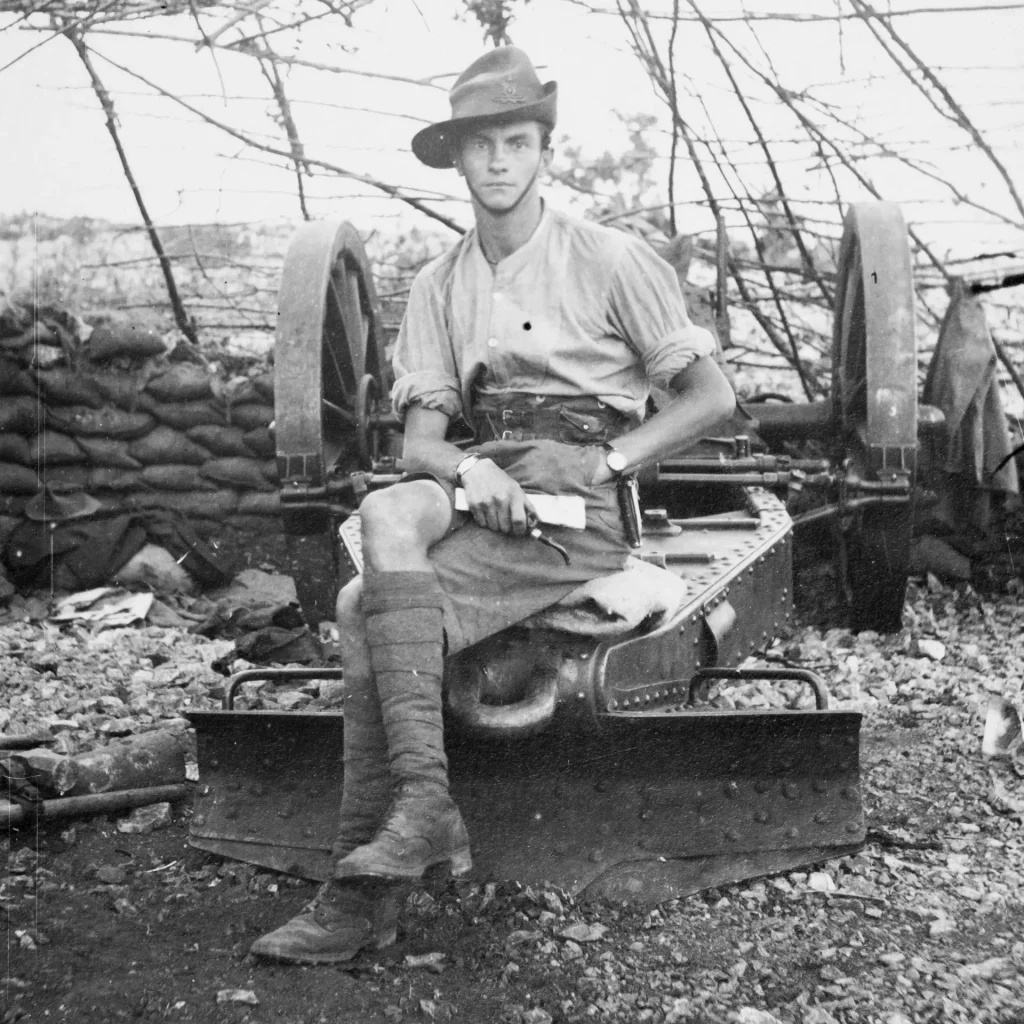
The caption on this photo says it was taken by ‘an Italian soldier‘. I think this was the picture that hooked me on the quest to do some research. I had so many questions. Where was the photo taken? Why is he wearing two wristwatches? What kind of hat is that?
Front line photos are uncommon because soldiers were generally forbidden to possess cameras. The thinking seemed to be that photos of the awful carnage would not be good for morale back home. The small number of British troops in Italy were under Italian command where different rules applied and the happy result was that my brother and I inherited a folder of negatives and some prints.
Filling in the knowledge gap
Rex died when I was young and he had rarely spoken of the war. His two younger brothers had been killed on the Western Front so maybe I thought it was a sensitive subject, I don’t recall. Thanks to my incurious younger self I had very little information but the photos started something and I needed to know more. My brother and I decided to drive to Italy in 2017 to find out.
The Karst
We now know that Rex’s active service was in two distinct phases. The first was in the limestone Karst area in north east Italy and into modern day Slovenia. The photos show an open, almost barren, landscape but now trees and scrub cover the ground. The scenes Rex could see and photograph have changed a lot.
Through sheer blind luck we made contact with a local historical group who supplied us with some maps of the gun positions. It helped a lot to have exact locations and we found trenches, gun pits and command posts. We could say with a high degree of confidence that we walking – within a yard or two – in Grandfather’s footsteps.
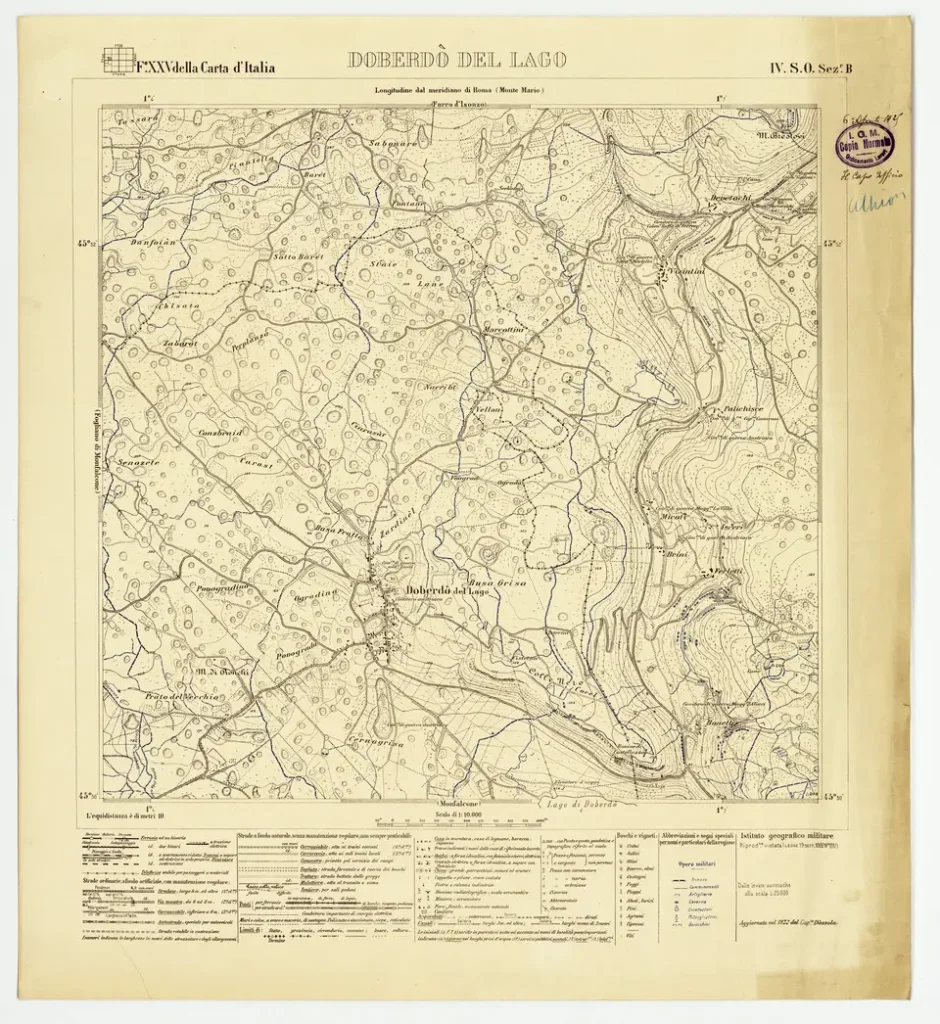
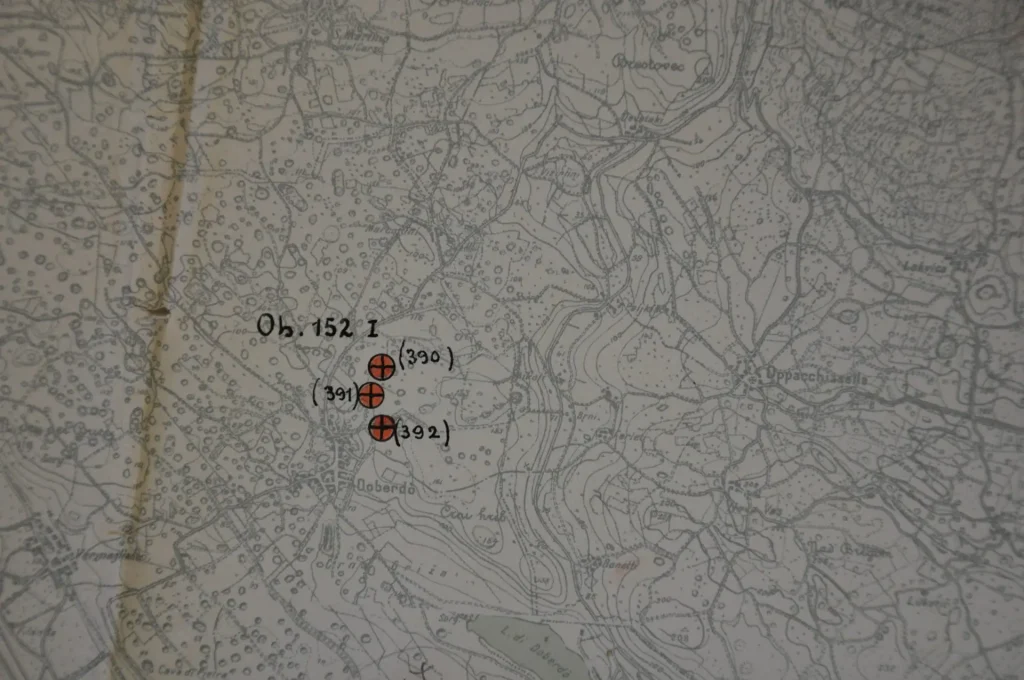
Rex’s section was the 390th RGA (Royal Garrison Artillery). The maps supplied to us showed that the 390th were at one time close to the village of Doberdo where there was heavy fighting. The Italians held a hill to the east of Doberdo, Hill 144, which was a particular hot spot and is now the site of memorials to those who fought and died.
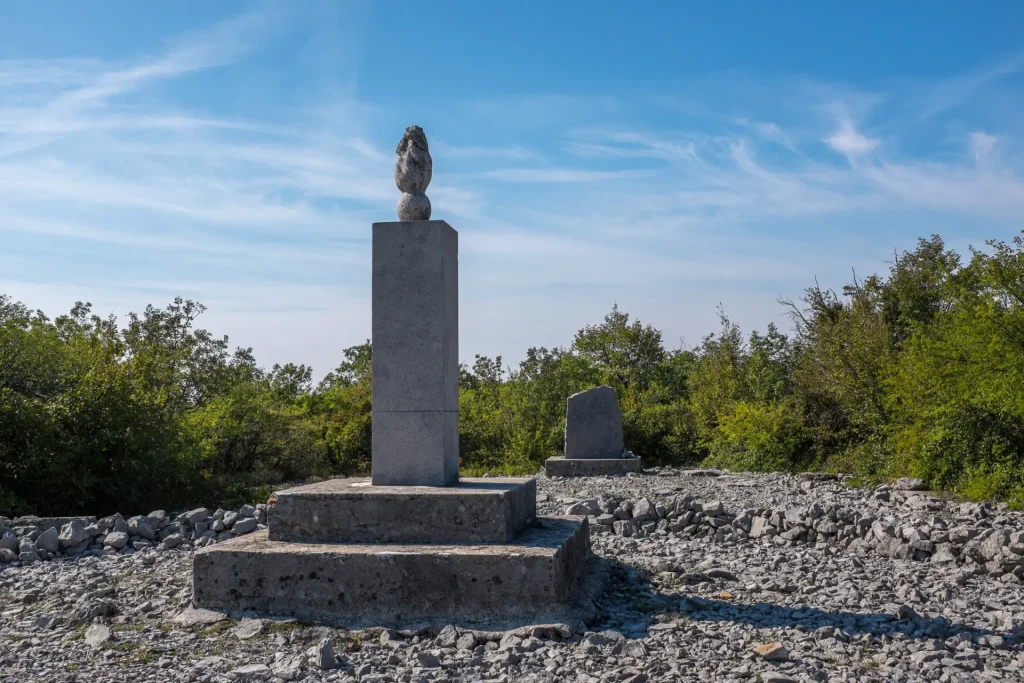
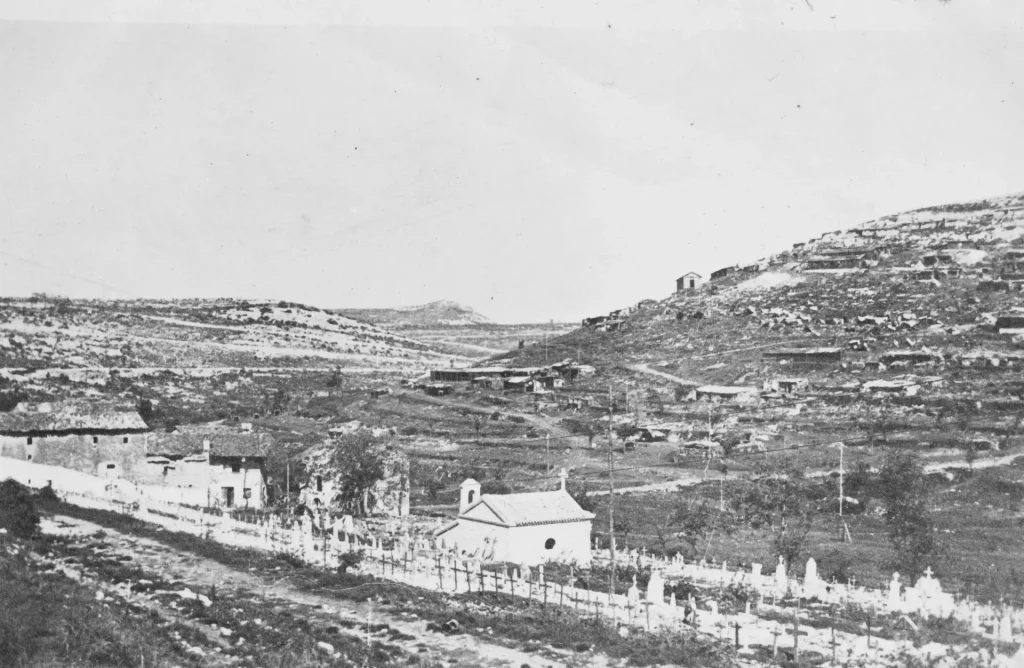
The photo above shows the cemetery at Doberdo in 1917. Soldiers graves were moved to larger cemeteries at the end of the war and the chapel seen here is now a ruin. The cross on top has fallen to the ground as shown in the photo below. The buildings on the hillside behind the graveyard are Italian barracks. No trace of these buildings now remains.
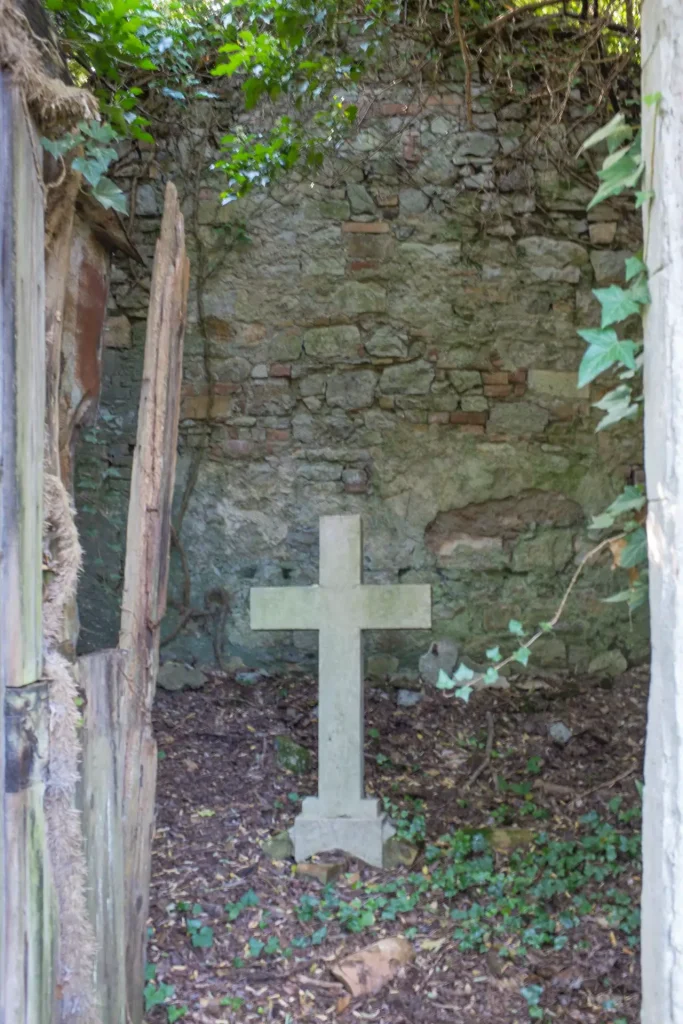
The image below shows three British Sergeants of 390th Royal Garrison Artillery and their Italian interpreter. Grandfather is the one in the steel helmet. Thick vegetation now covers the countryside so this patch of stony ground in some sense no longer exists. For me this is not just a picture, it’s a unique moment with a family link. A vest pocket camera tripped its shutter a century ago and in that instant captured a scene that is both mundane and magical.
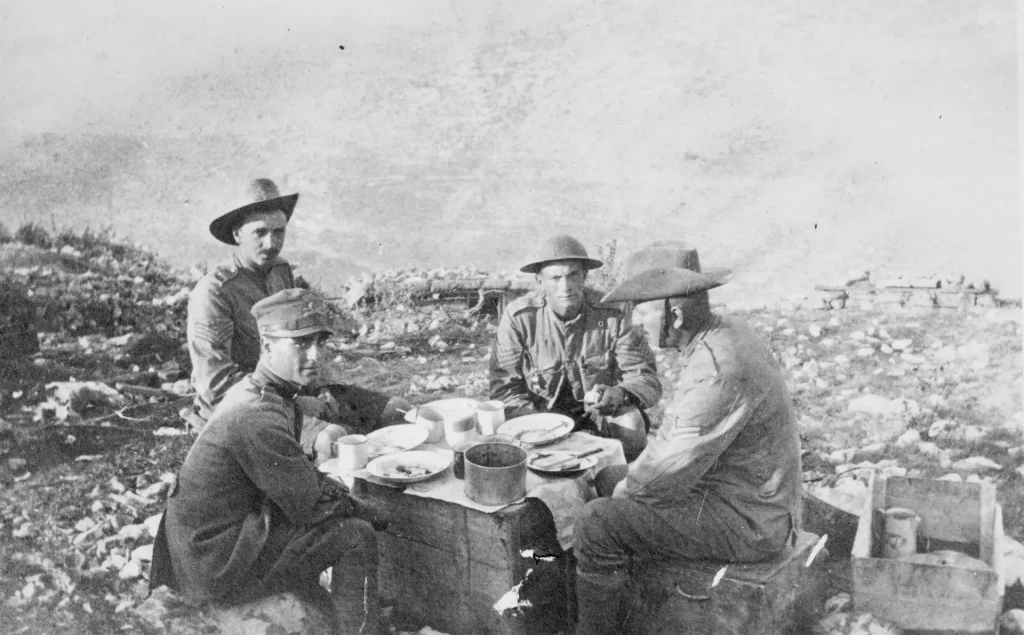
The Piave front
In the Autumn of 1917 Rex’s section was, luckily for him, withdrawn for training in Egypt. A few weeks later the Austrians, supported by German elite troops, broke through and pushed the Italians back to the Piave river. Rex returned to Italy in early 1918 but it was to new positions along the Piave.
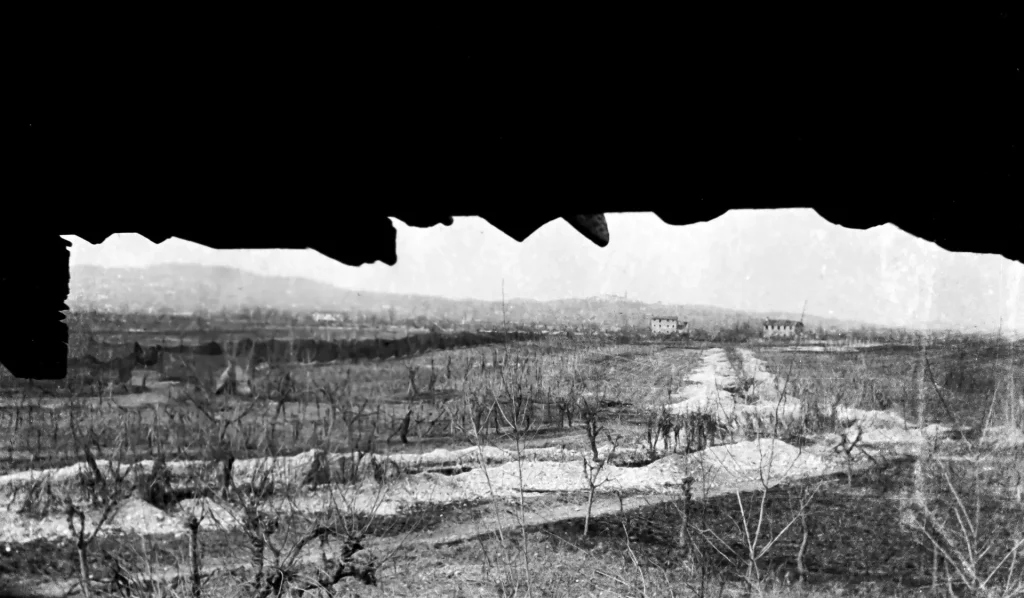
The photo above was taken from ‘Walter OP‘ and shows a faint but distinctive outline of a bell tower on the horizon. We knew the location was on the bank of the Piave river and were able to identify the bell tower as the Castello San Salvatore.
A visit showed that the skyline remains unchanged although other aspects of the countryside are very different. This area is now a housing estate. Sadly it was impossible to pick out an exact location of ‘Walter OP‘ or the gun pits.
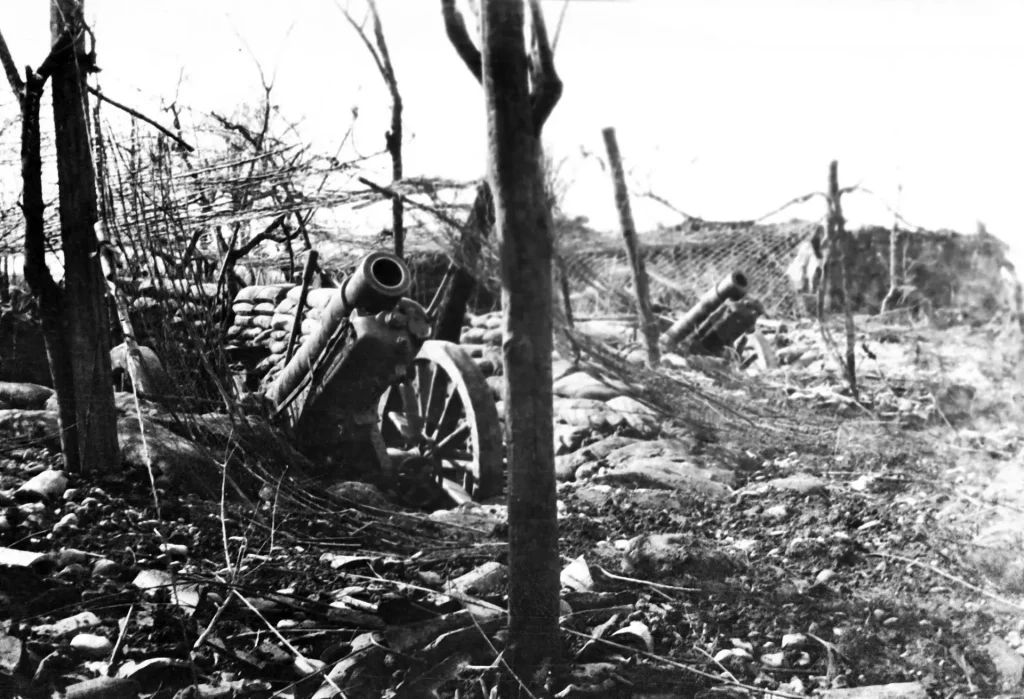
People
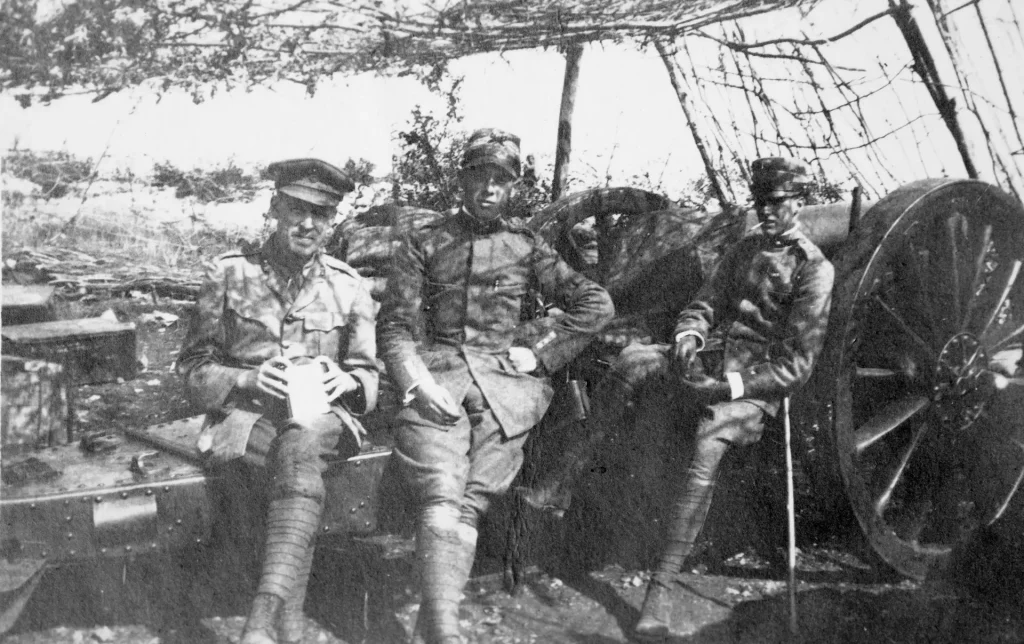
The label on this photo is ‘Major Turnbull (?) with two Italian officers‘ and is one of many that show people. A name is just a name but a photo brings a person back to life. I think Major Turnbull looks a kindly fellow.
The image below shows Rex with his best friend Don in Egypt. There are a number of photos of Don and I now see him in full three dimensions with a personality, not just a name.
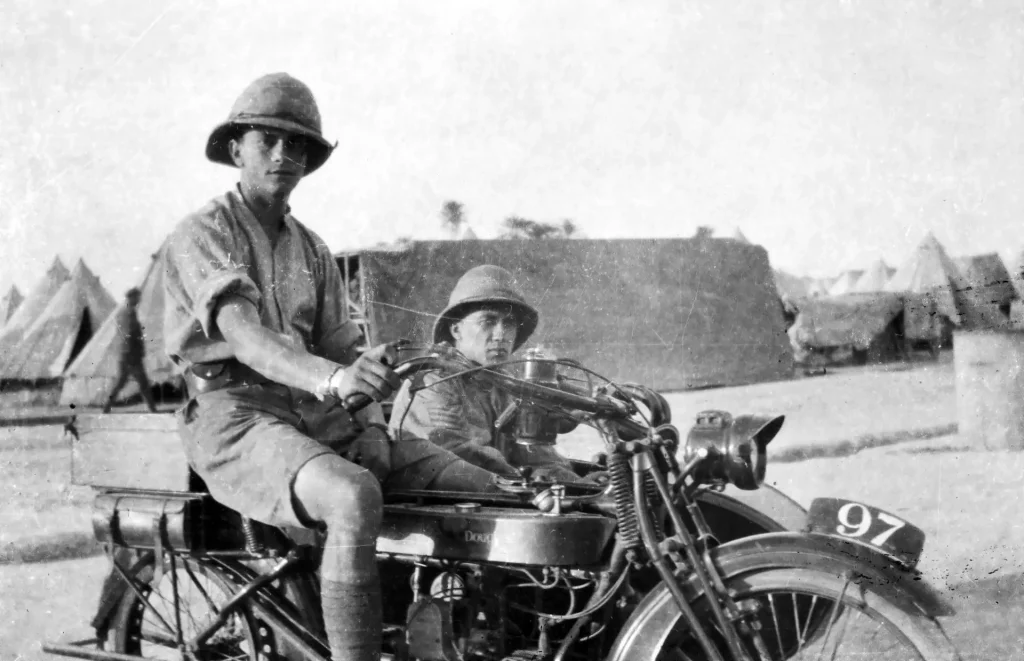
Here’s another one of Don larking about wearing a German helmet. He looks fun.
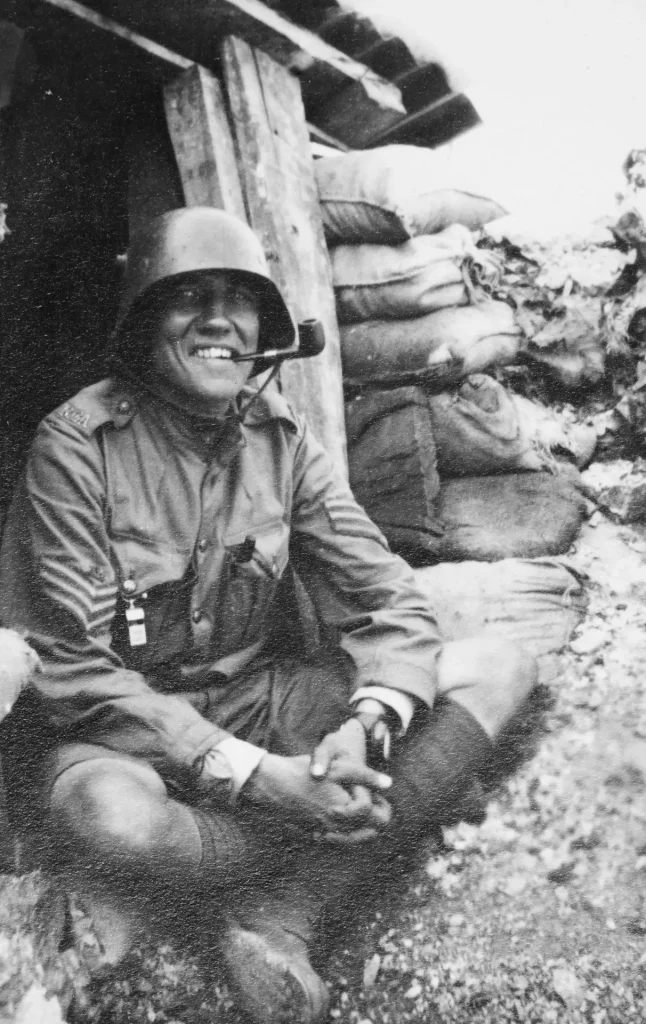
Isn’t photography brilliant?
These photographs are witnesses to people and events that would otherwise have evaporated into the ether, gone forever. Photographs can take us back in time and these simple snaps have a value to me that Rex could never have foreseen.
Isn’t photography brilliant?
Share this post:
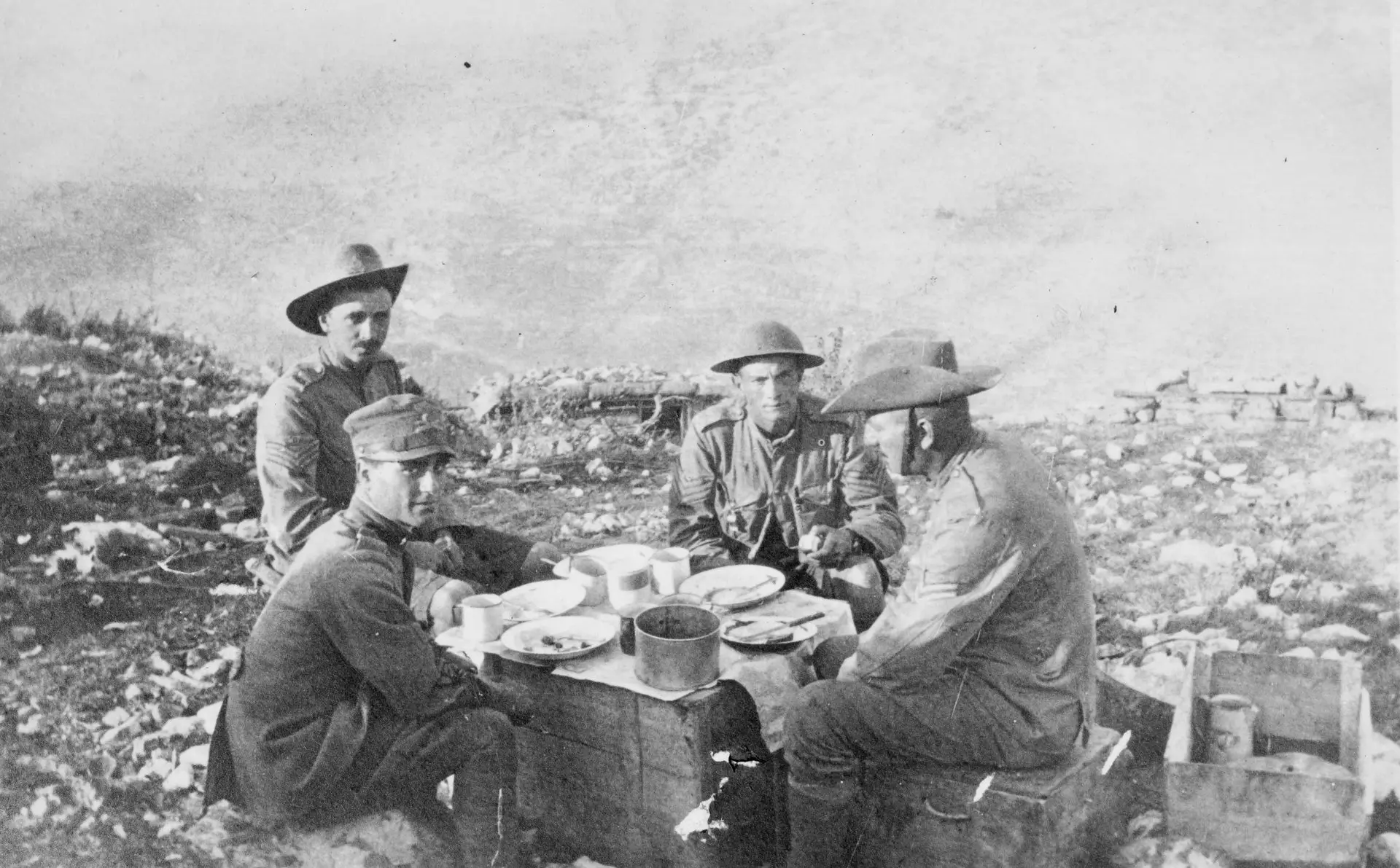








Comments
Gil Aegerter on Found Photos: Rex’s War – A Hundred Years of Photography – By Graeme Tregay
Comment posted: 10/01/2021
Comment posted: 10/01/2021
Axel on Found Photos: Rex’s War – A Hundred Years of Photography – By Graeme Tregay
Comment posted: 10/01/2021
Comment posted: 10/01/2021
Joris on Found Photos: Rex’s War – A Hundred Years of Photography – By Graeme Tregay
Comment posted: 10/01/2021
Bob janes on Found Photos: Rex’s War – A Hundred Years of Photography – By Graeme Tregay
Comment posted: 10/01/2021
But there is a chance that it was as a 'just in case', if one watch malfunctioned. - you don't want to start (or stop) you garage too soon or too late.
Dad suggested he might possibly have been a battery stg major.
Comment posted: 10/01/2021
Michael Sebastian on Found Photos: Rex’s War – A Hundred Years of Photography – By Graeme Tregay
Comment posted: 10/01/2021
I’m amazed at how well-preserved are the images. Do you have any idea what kind of film or paper they were made with? Especially since, if I recall correctly, films of that era were coated on nitrocellulose base material, which usually deteriorated pretty rapidly if not stored in ideal condition.
Also I’d guess the images were some medium-format size?
Thanks again for sharing.
Comment posted: 10/01/2021
Michael Sebastian on Found Photos: Rex’s War – A Hundred Years of Photography – By Graeme Tregay
Comment posted: 10/01/2021
I’m amazed at how well-preserved are the images. Do you have any idea what kind of film or paper they were made with? Especially since, if I recall correctly, films of that era were coated on nitrocellulose base material, which usually deteriorated pretty rapidly if not stored in ideal condition.
Also I’d guess the images were some medium-format size?
sharing.
Thanks again for
Bill on Found Photos: Rex’s War – A Hundred Years of Photography – By Graeme Tregay
Comment posted: 10/01/2021
Comment posted: 10/01/2021
Comment posted: 10/01/2021
Kevin on Found Photos: Rex’s War – A Hundred Years of Photography – By Graeme Tregay
Comment posted: 10/01/2021
Castelli Daniel on Found Photos: Rex’s War – A Hundred Years of Photography – By Graeme Tregay
Comment posted: 11/01/2021
On a different note, why are the men wearing the distinctive Australian hats? Was your grandfather serving in an Australian unit attached to the British Army? Just curious.
Comment posted: 11/01/2021
Simon on Found Photos: Rex’s War – A Hundred Years of Photography – By Graeme Tregay
Comment posted: 12/01/2021
Matt on Found Photos: Rex’s War – A Hundred Years of Photography – By Graeme Tregay
Comment posted: 15/01/2021